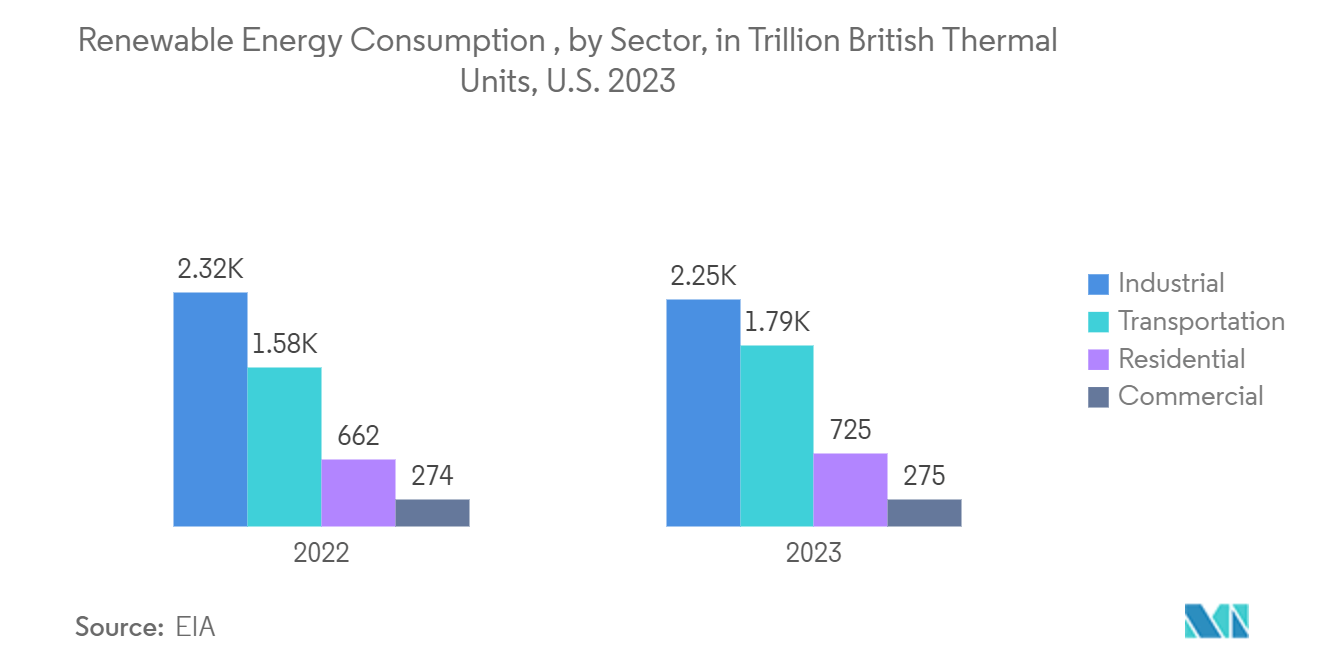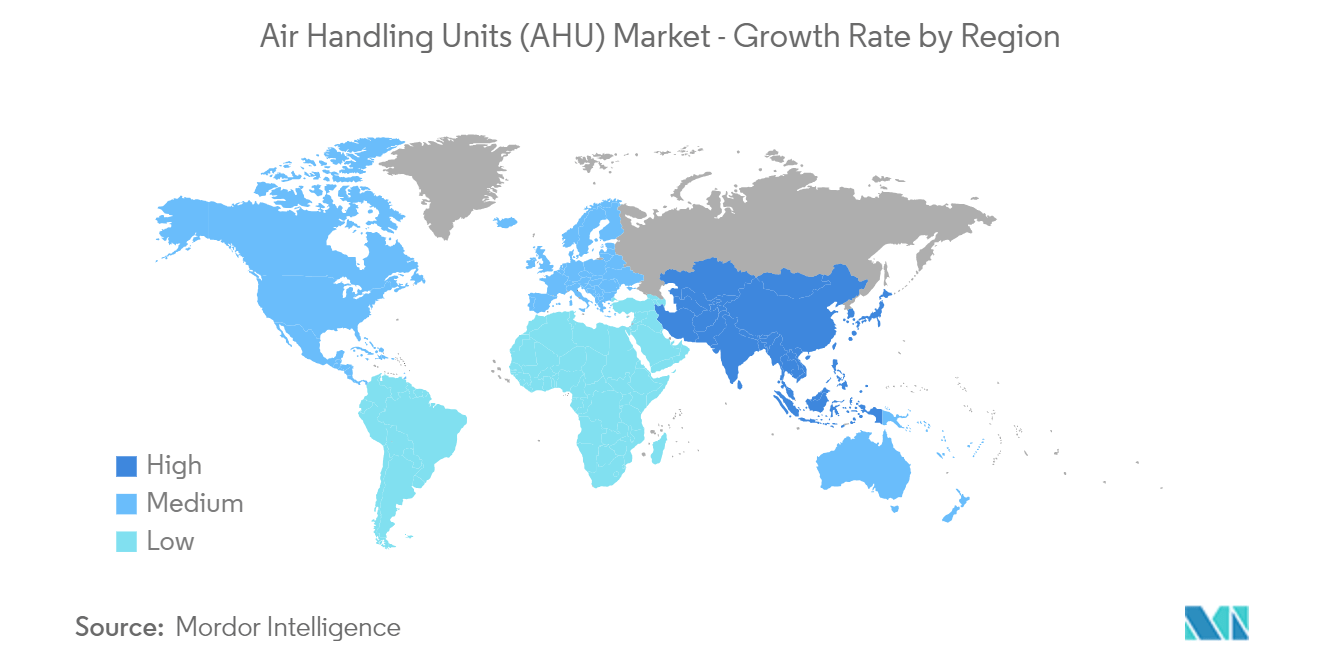Market Trends of Air Handling Units (AHU) Industry
Commercial Segment to Occupy a Significant Share
- Air Handling Units are used in any commercial structure, such as restaurants, data centers, hospitals, schools, hotels, and office buildings, to provide inhabitants with a comfortable environment. For instance, an air handling unit (AHU) is used in medium- and large-sized industrial or commercial buildings to condition and transport fresh air throughout the structure. AHUs are a component of the bigger HVAC system; they draw fresh outdoor air in, clean and condition it, and then heat or cool it as necessary.
- Air handler units can be utilized for either a single space or an entire building due to their wide range of size and functionality. They are frequently located in the basement or on the roof of commercial-sized buildings. The air handler unit can then be allocated to particular regions of a building to deliver heating or cooling as needed.
- The increasing demand for environmentally friendly and energy-efficient HVAC systems is credited with driving the segment's expansion. The need for energy-efficient and cost-effective HVAC solutions is driving the increased demand for air handling systems. Air handling units provide several advantages over other types of HVAC systems, including higher energy efficiency, cheaper running costs, and better indoor air quality.
- The commercial sector consumes a large portion of North America's overall energy consumption. There are approximately 6 million buildings in the business sector of the United States, totaling 97 billion square feet of floor space, according to the environmental services firm Carbon Reform. Additionally, mechanical heating and cooling systems are used in some capacity on more than 90 percent of the total commercial floor space. Additionally, it is anticipated that the expanding construction sector will drive the market and contribute to the overall energy requirements for commercial buildings.
- Considering a large commercial sector, the sector is also among the leading consumer of electricity in the United States; according to EIA, in 2022, about 4.9 quadrillion British thermal units of primary energy was consumed by the commercial sector in the United States. Hence, the growing energy consumption is anticipated to drive the demand for energy-efficient air handling units in the country during the forecast period.

Asia-Pacific is Expected to Register the Fastest Growth
- The air handling unit (AHU) market is anticipated to grow fastest in the Asia-Pacific region during the projected period, primarily due to the expanding infrastructure and building project investments and increased demand for energy-efficient technologies in the area. This market is anticipated to rise throughout the projected period due to technological developments such as intelligent AHUs.
- Countries like India and China are fast emerging as the pharmaceutical manufacturing hub in the Asia Pacific region. In the pharmaceutical business, air handling units are primarily used to maintain a regulated atmosphere for medicines and other items with high sanitation standards to prevent contamination, among other things. Due to the development of new chemical and pharmaceutical facilities like the Yeosu Mononitrobenzene Manufacturing Plant and Tuas Biomedical Park New Vaccine Production Facility, the market for air handling systems is anticipated to grow in the region.
- The fast-increasing industrial sector in Asia is one of the primary causes responsible for the most significant share. It is also anticipated that growing urbanization and commercialization in this region's developing nations, including India, Japan, China, and South Korea, will raise demand for air handling systems. Additionally, the rising disposable income and changing lifestyle also drive demand for pleasant living spaces, which is a significant element driving the market's direction.
- The Asia-Pacific region is crucial to global efforts to attain net zero and a transition to green energy. The "green" trend is exploding throughout Asia-Pacific due to numerous governments establishing national or regional initiatives and programs to promote energy conservation efforts. The government's initiatives provide enormous prospects for technologists in the green and energy efficiency sectors of HVAC and building automation systems.
- Moreover, environmental laws are becoming more prevalent in Asia-Pacific, including the Australian Minimum Energy Performance Standards (MEPS), China's Green Building Evaluation Label (GBEL), and India's Bureau of Energy Efficiency Standards and Labeling Program (BEE Labeling Program), among others. As a result, the HVAC industry in this area is turning toward environmentally friendly AHUs with low Global Warming Potential (GWP) and energy-efficient technology.


